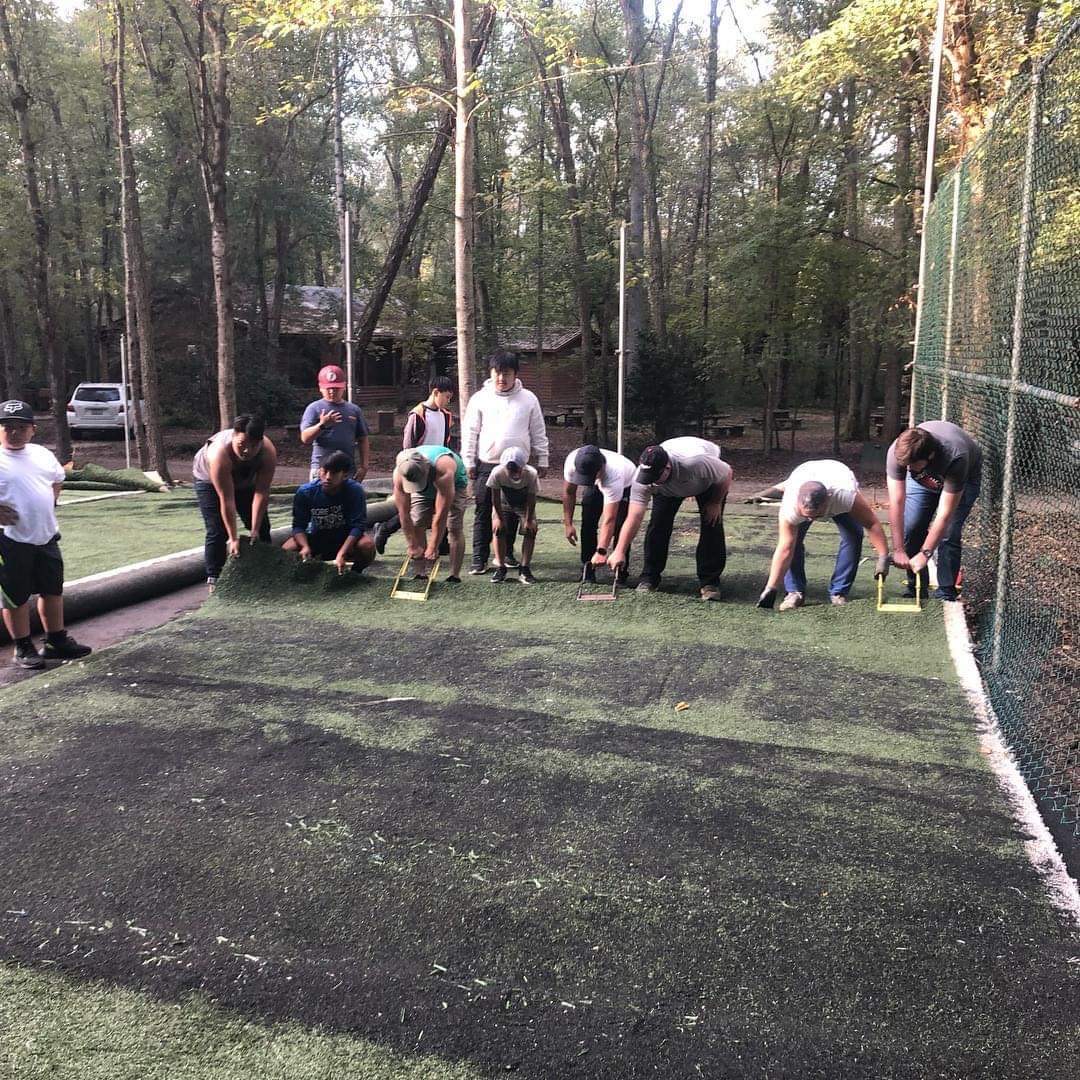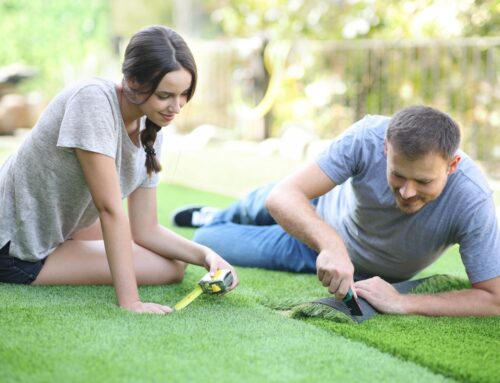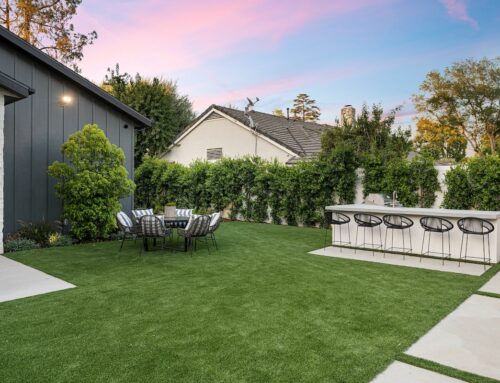Last Updated on March 22, 2024 by ReTurf
When it comes to installing artificial turf, whether for sports fields, landscaping, or residential use, one crucial aspect often comes under scrutiny – the depth of the sand layer beneath the turf. This foundation is pivotal not only for the turf’s durability and functionality but also for ensuring proper drainage and longevity. The depth of this sand layer, which often includes crushed rock, is determined by various factors, including the type of soil and the intended use of the turf. This article delves into the best practices for determining the optimal depth of the sand layer beneath artificial turf, distinguishing it from the sand infill used on top of the turf.
Understanding the Layers of Artificial Turf
Before diving into the specifics of the sand layer’s depth, it’s essential to differentiate between the two key components of artificial turf installations: the foundational sand layer and the sand infill. The foundational sand layer, mixed with crushed rock, lies directly on top of the soil and beneath the artificial grass. This layer serves as a stabilizer, providing a solid foundation that ensures proper drainage and supports the turf structure. On the other hand, sand infill is spread across the top of the synthetic grass blades. It helps keep the blades upright, adds extra cushioning, and contributes to the turf’s overall natural look and feel.
The Role of Soil Type and Drainage
The type of soil present in the installation area plays a significant role in determining the depth of the sand layer required beneath synthetic turf. Soils with high clay content, for example, have poor drainage capabilities, necessitating a deeper sand layer to facilitate proper water runoff and prevent waterlogging. Conversely, sandy soils inherently allow for better drainage, which might reduce the need for an exceptionally deep foundational layer.
The area’s drainage capacity directly influences the depth of the sand and crushed rock layer. Enhanced drainage is crucial, especially in regions prone to heavy rainfall or for installations like sports fields, where waterlogging can significantly affect performance and safety. In such cases, a deeper layer is essential to improve drainage efficiency and ensure that the turf remains functional and safe under wet conditions.

Determining the Optimal Depth
The optimal depth of the sand layer beneath artificial turf generally ranges between 2 to 4 inches. However, this can vary based on the factors mentioned above. For installations over soil with poor drainage or for high-traffic areas, the depth might need to be adjusted upwards to ensure stability and drainage efficiency.
- For Residential and Light Commercial Use: A depth of 2 to 3 inches is typically sufficient. This range provides enough cushioning and drainage for areas that will not endure heavy use, such as home landscapes or light commercial settings.
- For Sports Fields and High-Traffic Areas: A depth of 3 to 4 inches, or even more, might be necessary. The increased depth offers better stability and durability for the turf under the high-impact use seen in sports fields and other high-traffic areas.
- Adjusting for Soil Type: In areas with clay soil, the depth might need to be increased beyond the standard recommendations to counteract the soil’s poor drainage capacity. Conversely, in areas with sandy soil, the required depth might be slightly less, thanks to the natural drainage capabilities of the soil.
Incorporating Crushed Rock
The sand layer beneath synthetic turf often includes crushed rock to enhance its stability and drainage capabilities. The crushed rock, typically sized between 1/4 to 3/4 inches, is mixed with sand to create a more robust foundation. This mixture not only supports the turf backing more effectively but also facilitates quicker water drainage, preventing the buildup of moisture and the growth of mold or mildew.

Installation Best Practices
Achieving the optimal depth of the sand and crushed rock layer requires careful planning and execution. It’s crucial to conduct a thorough assessment of the soil type and drainage conditions of the installation site. Understanding the intended use of the synthetic turf area will guide the decision-making process regarding the foundation’s depth. Here are some best practices:
- Conduct a Soil and Drainage Assessment: Before installation, assess the soil type and drainage capabilities of the area. This assessment will inform the necessary adjustments to the depth of the sand layer.
- Use Quality Materials: Ensure the sand and crushed rock used are of high quality. The right materials will significantly impact the turf’s performance, appearance, and longevity.
- Professional Installation: Consider hiring professionals for the installation. Experienced installers can accurately determine the optimal depth for the sand layer, considering all the variables involved.
The Finishing Details
Determining the optimal depth of the sand layer beneath artificial turf is a nuanced endeavor that hinges on several critical factors, including soil type, drainage requirements, and intended usage. While general guidelines suggest a range between 2 to 4 inches, tailoring this depth to meet the specific conditions of the installation site ensures the artificial turf’s functionality, durability, and aesthetic appeal over time. This foundational layer, distinct from the sand infill applied to the surface of the turf, plays a pivotal role in stabilizing the artificial grass, supporting effective drainage, and ultimately, extending the lifespan of the installation. By adhering to best practices and considering the unique aspects of each project, installers can deliver high-quality, long-lasting artificial turf systems that meet and exceed expectations, whether for residential landscaping, commercial spaces, or athletic fields.
Looking for top-quality artificial turf or premium infill for your next project? Look no further than ReTURF! We specialize in providing superior artificial grass solutions that cater to a wide range of applications, from residential landscaping to commercial spaces and sports fields. Our commitment to quality and sustainability ensures that every product we offer meets the highest standards. Whether you’re laying down a new lawn or seeking the perfect infill to keep your synthetic grass looking its best, ReTURF has you covered. Visit us today to explore our selection and take the first step towards a beautiful, maintenance-free green space.



